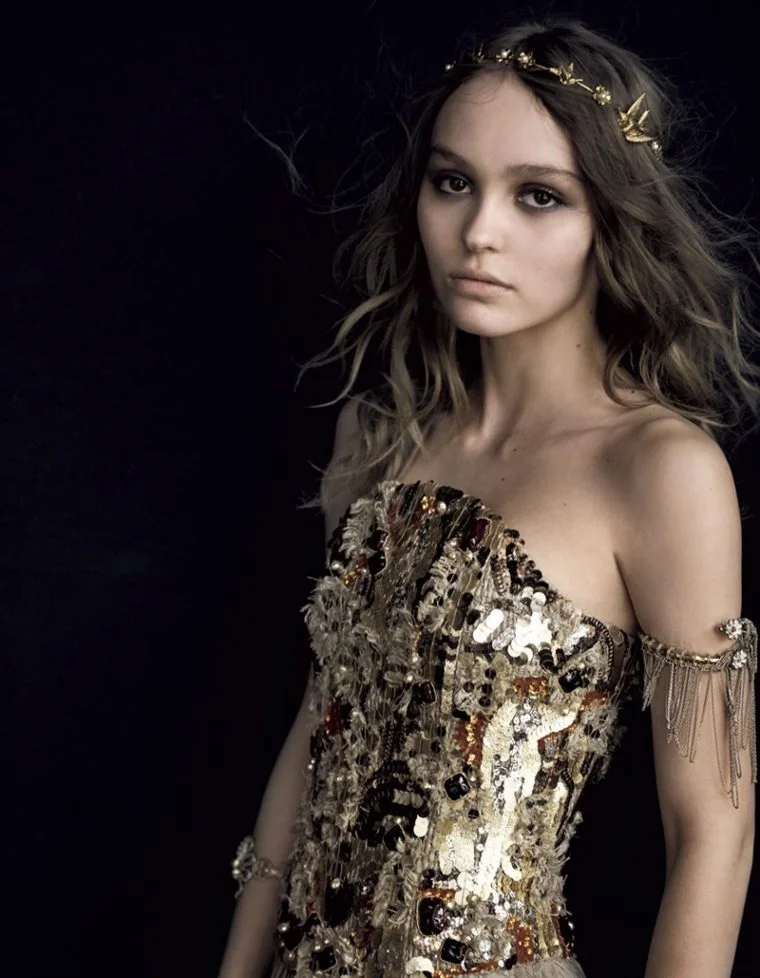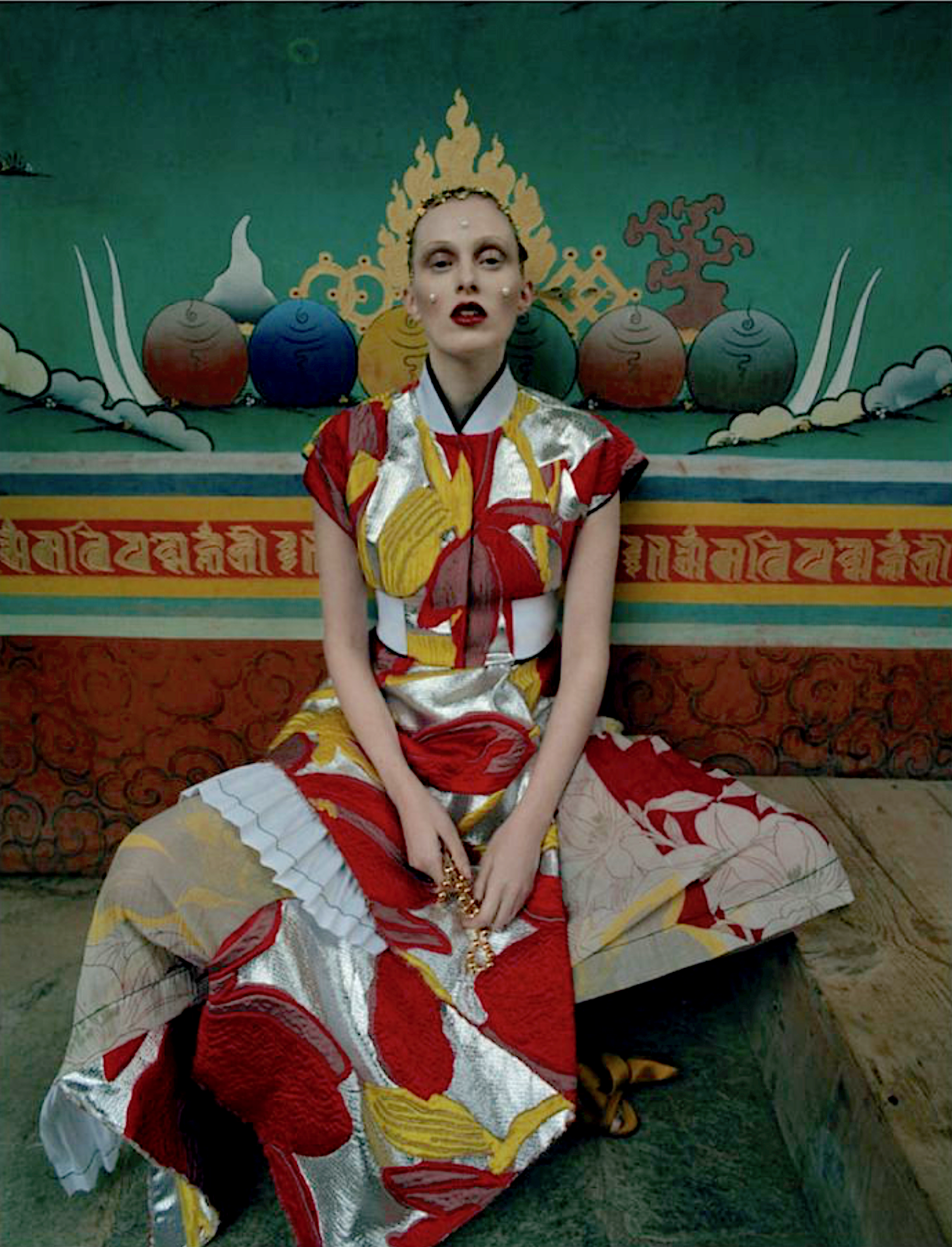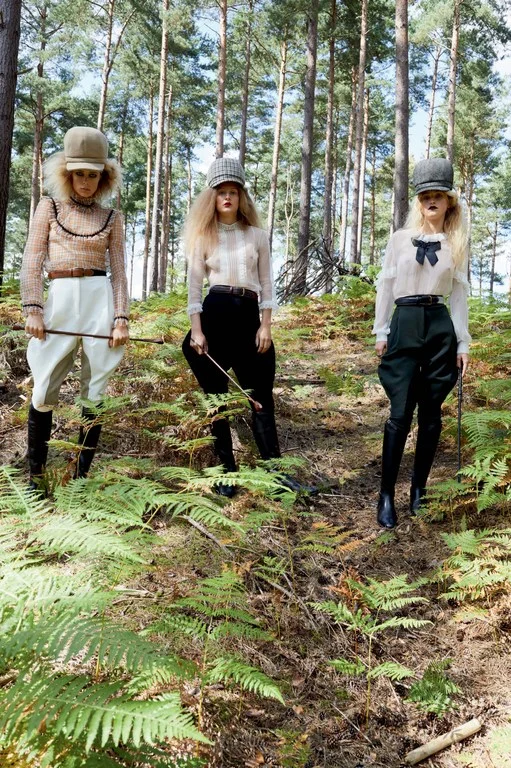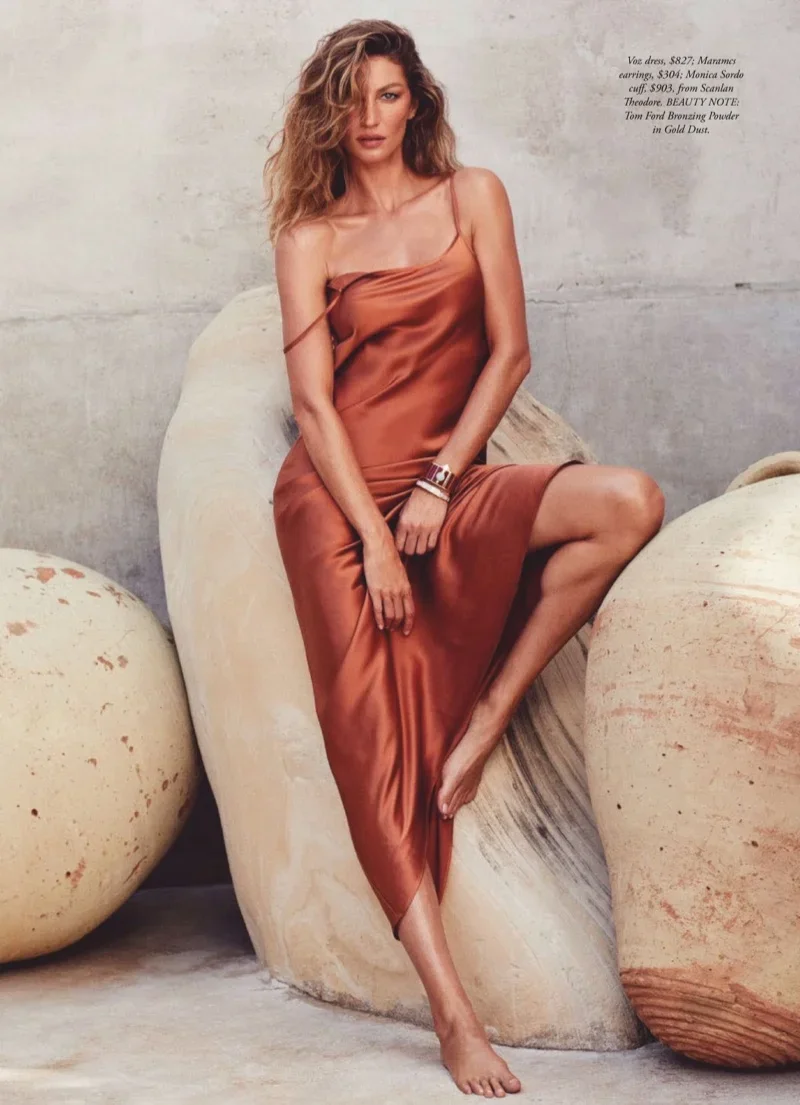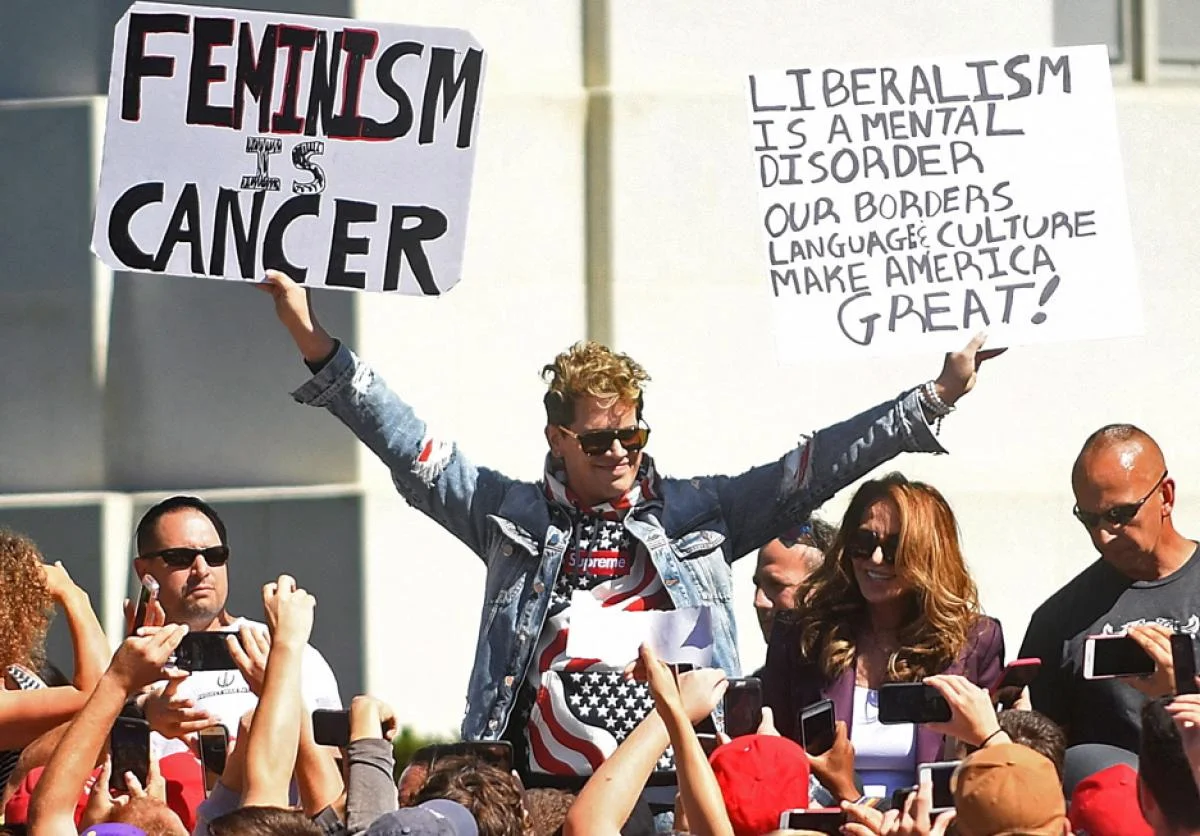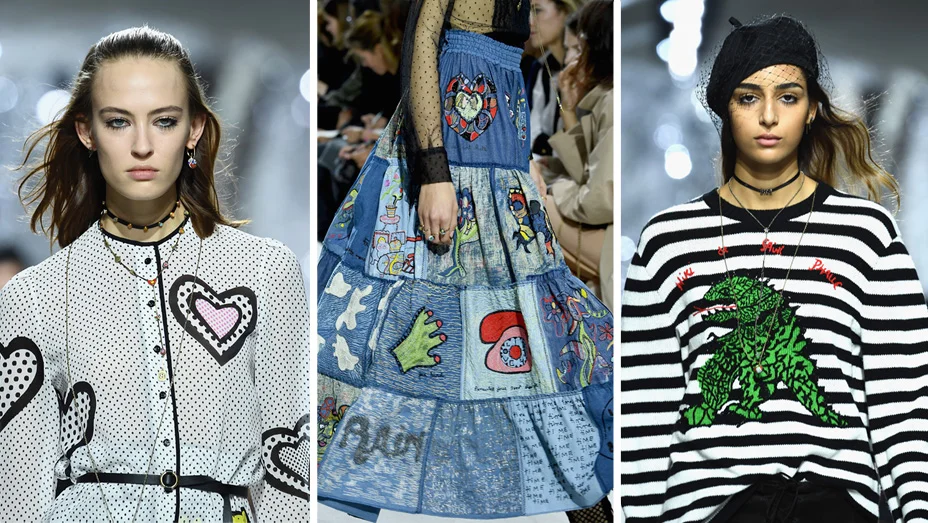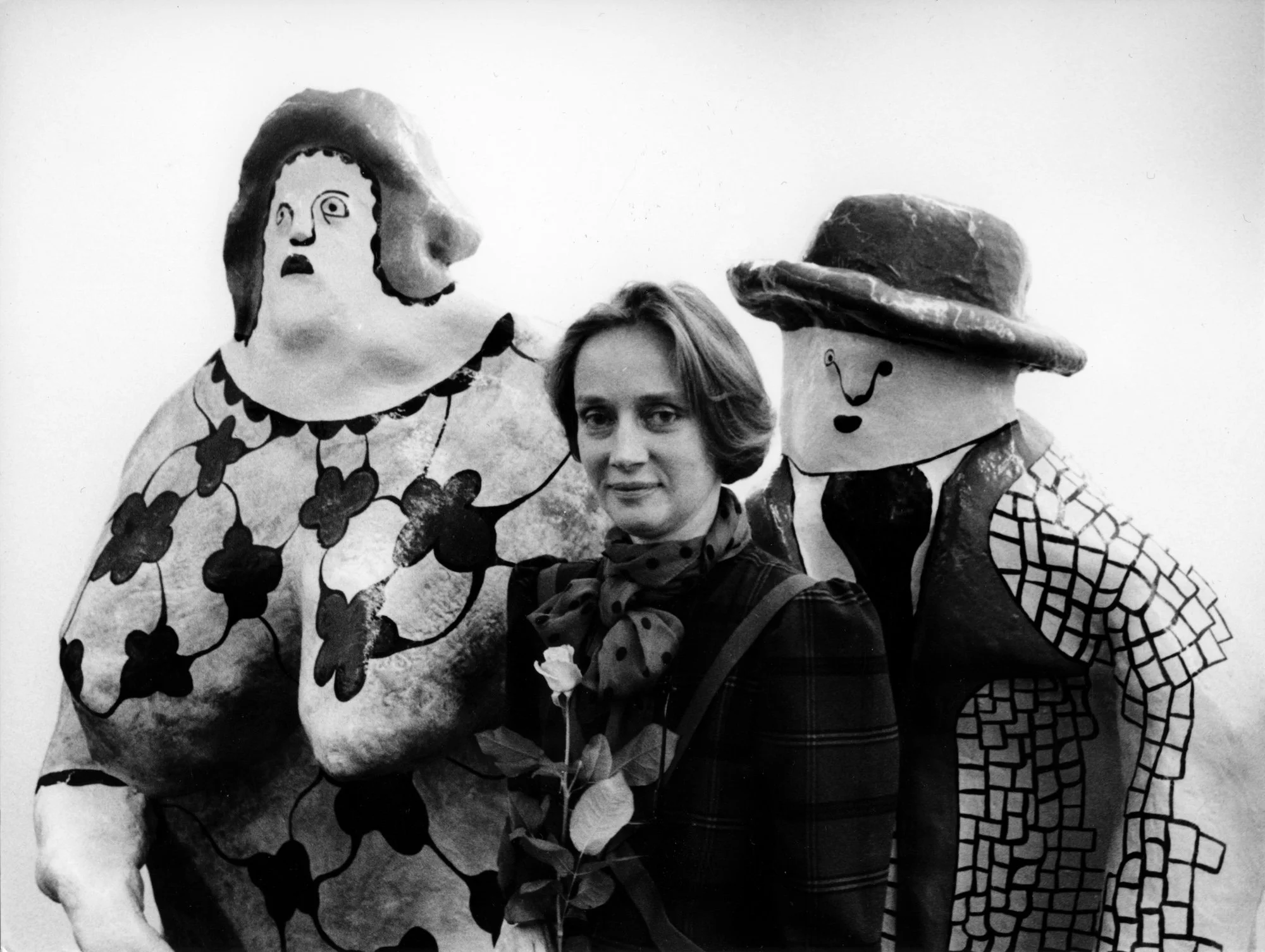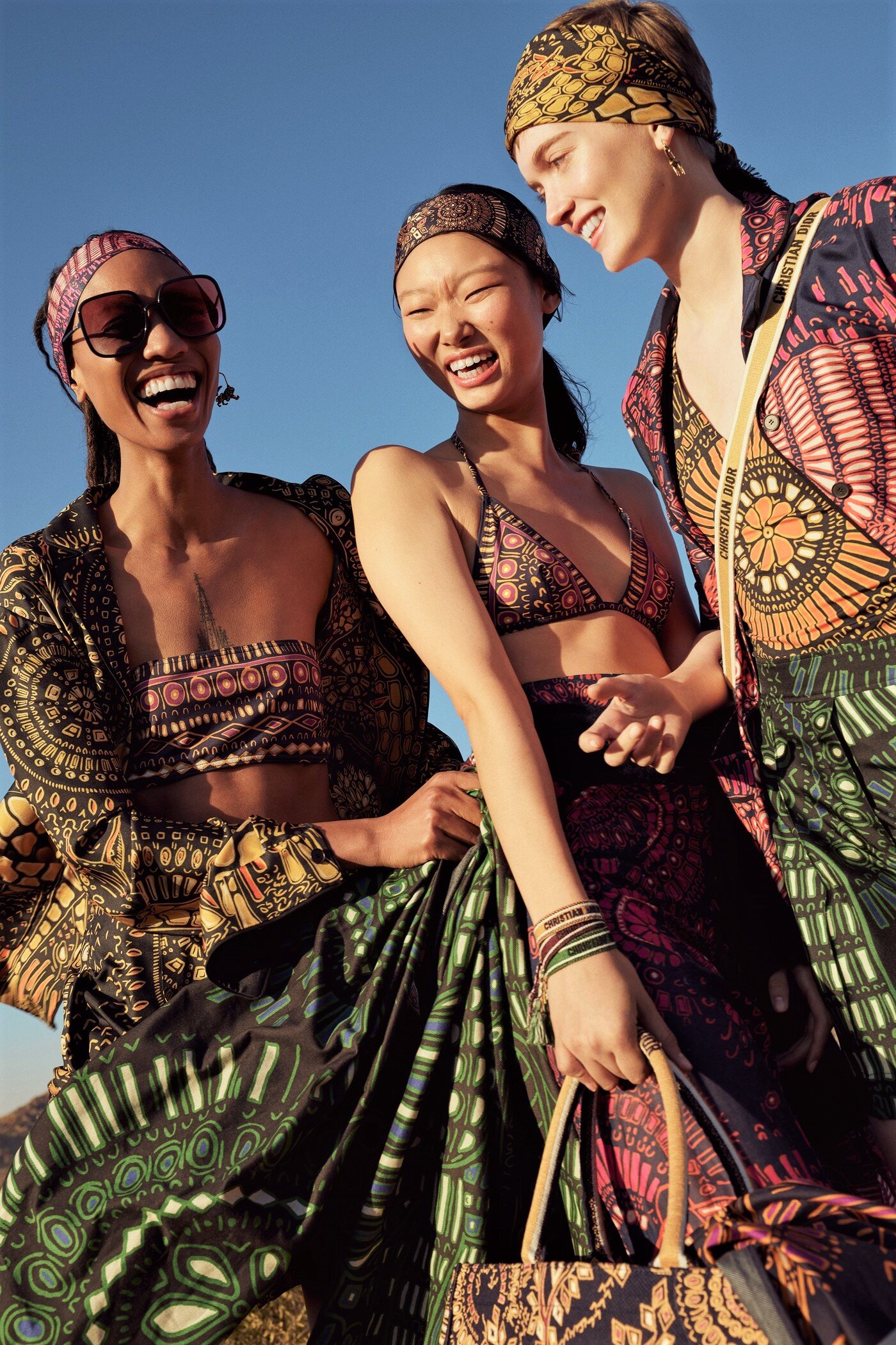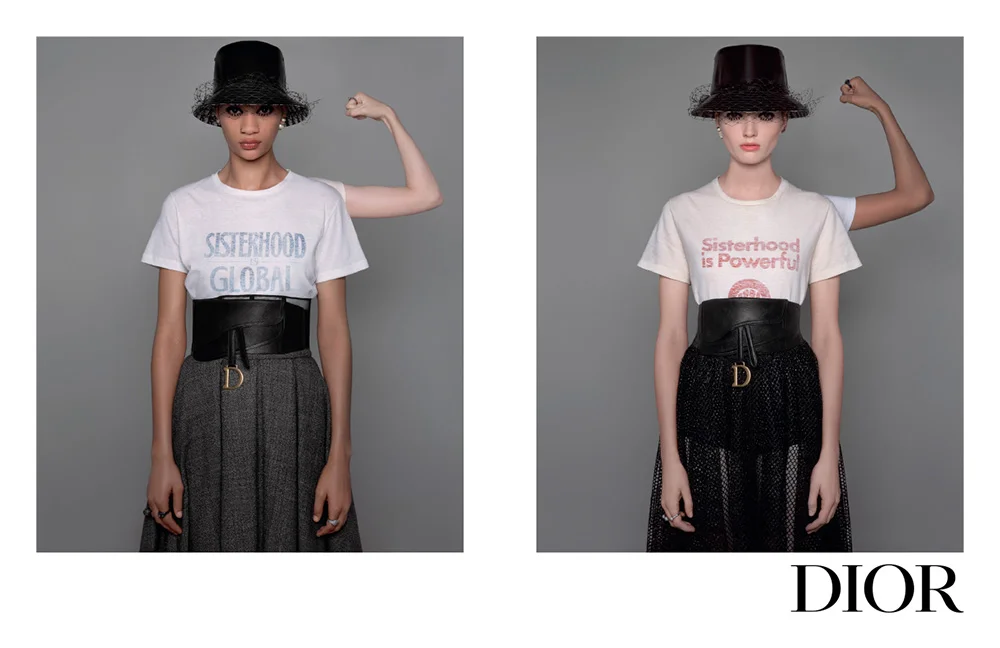Eye: Is Feminism 21st Century Cancer? | Dior's Chiuri Turns To Nochlin's Why No Women Artists Essay
/The 'Coachella of Conservatism' fizzled into an 'expensive photo opp' at U of California Berkeley's campus this week. Organized -- and we use the term loosely -- by alt-right bad boy Milo Yiannopoulos, not even 'antifa' showed up for the fight.
Based on Yiannopoulos' spring clashes in Berkeley, when 'atifa' did show up and the damage was significant -- about $200,000 worth of broken windows and property damage alone -- the university ponied up major security for 'Berkeley Free Speech Week', clearly in serious trouble last Friday night.
In a painful reality check, university officials realized they got played, writes the LA Times ponying up an estimated $800-000-$1 million in security for the nothing-burger event. Still Milo had his diva media moment, dressed in his American flag hoodie and waving a 'Feminism Is Cancer' sign before the tiny crowd.
Related Thursday Sept. 28, 2017 post
Maria Grazia Chiuri Hugs Feminism Yet Again
A year ago, Maria Grazia Chiuri launched her debut collection for Dior, declaring a traditionally not-Dior message 'We Should All Be Feminists', inspired by Chimamanda Ngozi Adichie's famous contemporary speech about feminism for Nigerian women.
To state the obvious, Chiuri takes major issue with Milo's assertion that 'Feminism is Cancer'. In a clear indicator of her mindset and a long-term view, Dior's Creative Director -- the first woman designer in Dior's 70-year history -- asks for Spring 2018 and in all caps: "WHY HAVE THERE BEEN NO GREAT WOMEN ARTISTS?"
Only a second-wave feminist or art historian knows the origin of Chiuri's question: a 1971 essay by art historian and critic, Brooklyn-based Linda Nochlin. ArtNews calls the essay "one of the most famous and senimal essays of postwar art history." Nochlin's granddaughter, filmmaker Julia Trotta worked with Dior on the collaboration, with a copy of the essay distributed to fashionistas in the crowd.
Chiuri's spring 2018 message in the form of a question came while researching the Dior archives and discovering a series of photographs of French-American sculptor, painter, and filmmaker Niki de Saint Phalle. The artist, who was widely known for monumental sculpture, died in 1973.
Niki de Saint Phalle and her Nanas by Kurt Wyss , 1985
Vogue writes: "By connecting art to second wave feminism, Nochlin’s text reveals that even within the aesthetic realm, gender inequality helps determine who is considered an artist and what work is deemed culturally significant. The problem, she goes on, is not an actual lack of female artists of worth, but a failure to understand the imbalance of power that impacts art and society as a whole."
Her essay forced change in the male-focused discourse of art history and resulted in a landmark 1976 exhibition at the Los Angeles County Museum of Far, "Women Painters: 1550-1950.
"I'm inspired by the way she brings her own personal flair to a house with such a legacy," Karlie Kloss says of designer Maria Grazia Chiuri's work. "It takes a lot of courage."
Some will argue that Chiuri is co-opting a political movement for profit, but in my view feminism needs all the help it can get. More so than in Europe, the very existence of feminism is under assault in Trump's America. Not only is it under assault by the alt-right, the religious patriarchy and the Trump administration; the founders of the wildly-successful January 21, 2017 Women's March refused to allow 2016 presidential candidate Hillary Clinton's name to be included on a list of women honored. Roll that joint and smoke it!
Believe it or not, Breitbart News, Milo Yiannopoulos' former employer, wrote about the Dior show -- and with a predictable answer:
When feminists have asked the question punted to the public by Dior about female artists, critic Camille Paglia has often said that the differences between men and women give an explanation as to why men tend to dominate the course of history with their artistic abilities.
“I think that genius and criminality are both extremes and deviations off the end of the human spectrum,” Paglia said in a 1992 interview. “This is my explanation for why there are no women artists. It’s not that women have not been held back from practicing so many of the art forms, but rather that great art… comes from obsessiveness, comes from a kind of self-mutilation of relationships and so on.”
“This is why we have very few women chess-masters,” Paglia said. “Very few obsessed [female] serial murderers or computer hackers and so on. I think that the male brain has both a greater capacity for genius and criminality, both are deviations.”
The key questions are 1) what is Dior doing to advance the cause of social justice and women artists outside of the luxury market; and 2) within the fashion industry, how is Dior changing the narrative and advancement of women in its own business unit.
Nochlin herself is alive at age 86 but unable to provide comment to the Cut, as she is now "focusing on her health."
But Trotta shared her personal thoughts on combining branding with feminism in an email on her grandmother’s behalf: “It’s happening regardless of what we think,” she wrote. “But I guess it’s better to try to take advantage of that interest and embrace all the questions and complications that come up in hopes to deepen and expand the feminist conversation. And then it’s up to us (feminists) to hold those brands accountable for the messages they project.”
Of her grandmother’s original essay, Trotta wrote, “I think it’s lasted this long because it’s quite elastic and is a model of activist writing that can apply to any number [of] subject positions and disciplines. It’s basically questioning every convention and institution, which we need to continue to do.”
Nochlin accepted no compensation for reprinting her essay but she did establish a few conditions for Dior, including Dior's support for a group art show at the Monnaie de Paris titled 'Women House' which opens October 20, 2017. Curated by Camille Morineau, it includes 40 female artists from around the world, and will come to the National Museum of Women in the Arts in Washington, D.C., on March 8, 2018.
Following Tuesday’s show, the Times also argued: “In her essay Ms. Nochlin posited that part of the problem were rules made by the patriarchy, but Ms. Chiuri is not rejecting clothes dictated by the patriarchy.”
Vanessa Friedman's beef was with the clothes themselves, and while I'm a veteran battler against the patriarchy, I don't believe that LVMH is driving Chiuri's design vision. Obviously, Friedman should know better than me, and she writes about the Dior collection:
But what feminist, even a millennial one, wants to wear a mirrored mosaic onesie in bright pink or blue under a transparent tulle skirt open to the waist that looks like nothing so much as Madonna in her “Desperately Seeking Susan” years? Or a white cotton version over a polka dot shirt with a swiss dot skirt below and a white jacket over it all, as if to give new meaning to the term play suit? These are not the clothes of revolution, even New Look revolution.
Women customers will answer that question.
Chiuri had a good start in quarter 2017. "For the first quarter of 2017, Christian Dior Couture posted revenue of 506 million euros, up 18% at actual exchange rates and 17% at constant exchange rates compared with the same period in 2016. Retail sales revenue grew by 19% at actual exchange rates and 18% at constant exchange rates. During the quarter, the first Spring/Summer 2017 Ready-to-Wear and Accessories collections designed by the new Creative Director for women's fashion were very well received."
